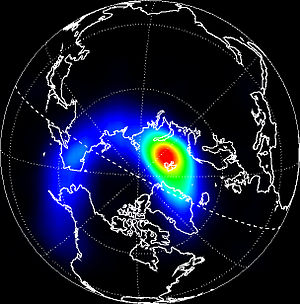Portal:Radiation astronomy/X-ray astronomy article/11
Appearance

X-ray generation is producing X-radiation by a variety of phenomena. For example, when high-energy X-rays, gamma-rays, electrons, or protons bombard materials, the excited atoms within emit characteristic "secondary" (or fluorescent) X-rays. Alternately, whenever charged particles pass within certain distances of each other without being in fixed orbits, the accelerations (or decelerations) can give off X-rays.
